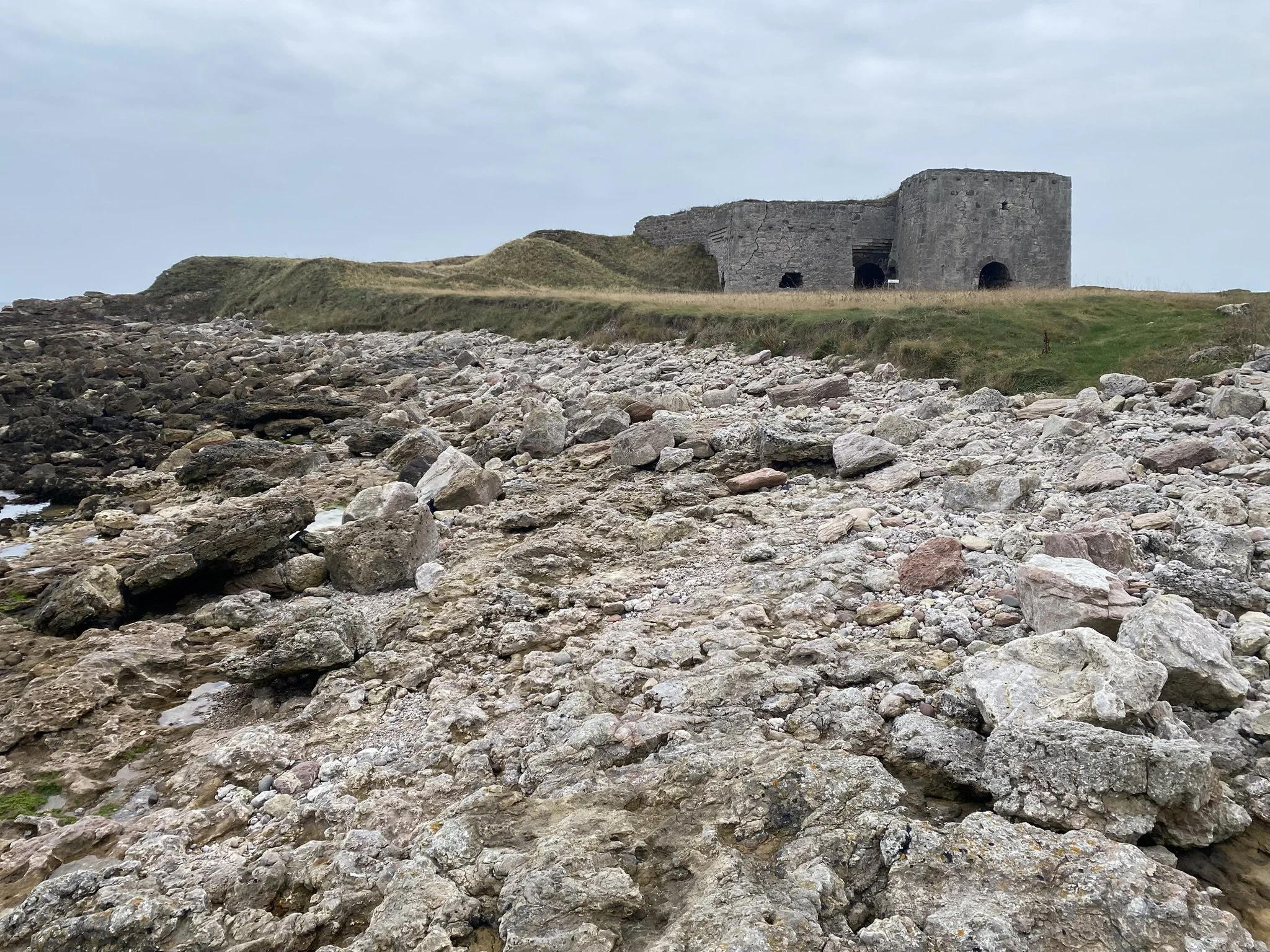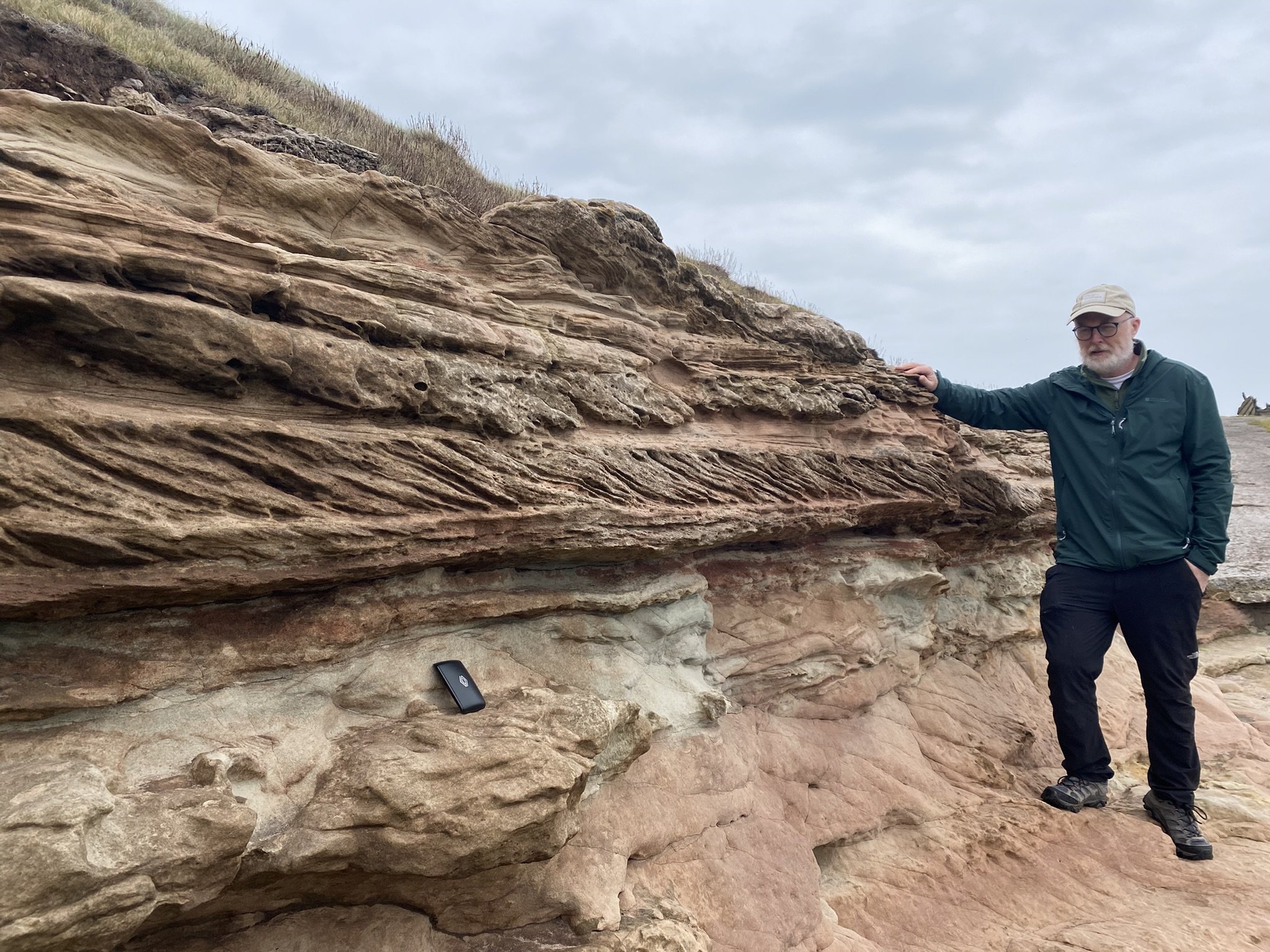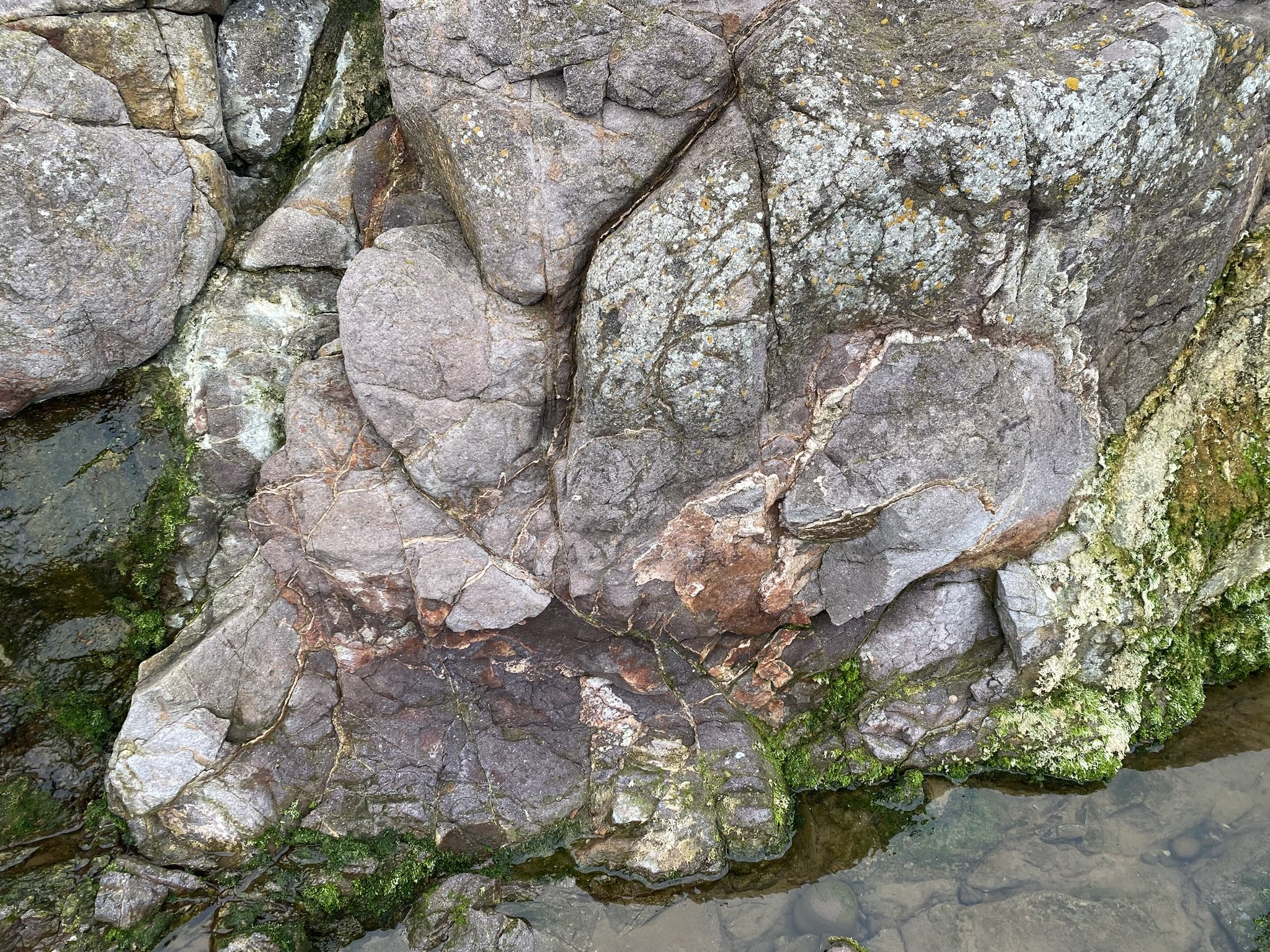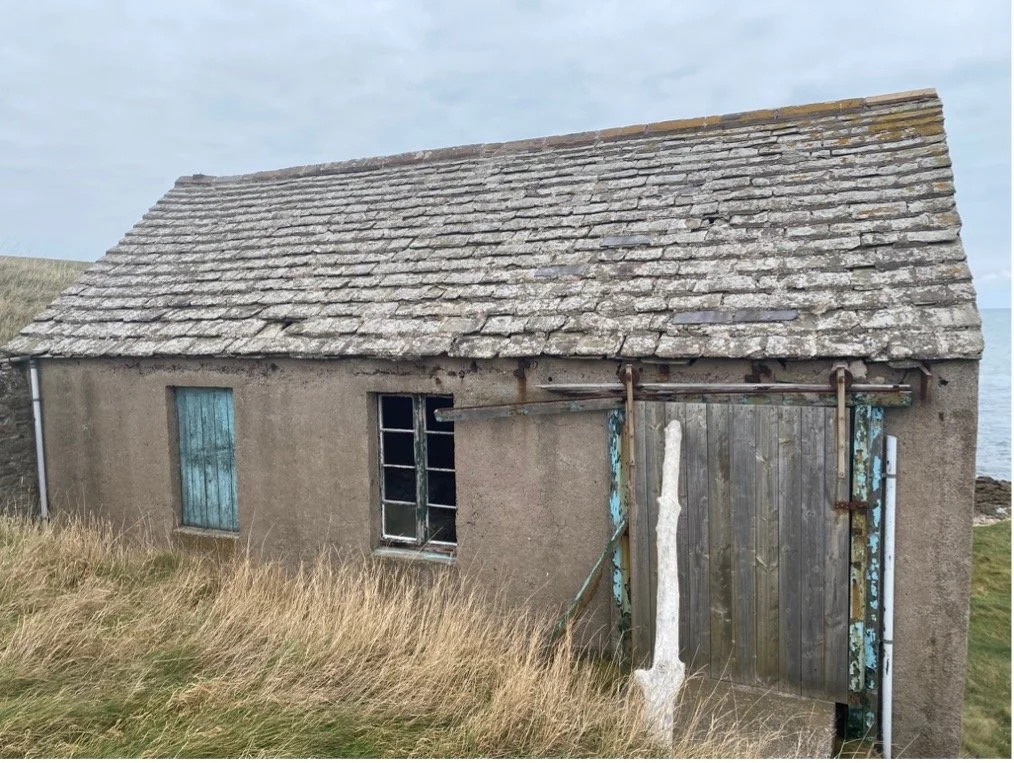Limekiln and Geology at Boddin Point
As you approach this finger of land that sticks out into the N Sea, just south of Montrose you’ll think the castle like building is a small fortress strategically positioned to defend the coastline. It’s not - in fact it’s a 18th century limeworks, the largest of it’s kind in Scotland at the time. It was built by a family of entrepreneurs who worked out that if he could use the local limestone to create quicklime, this could be spread on local fields to boost yield. Its likely that the lime was also used as mortar for local buildings at the time.
The Geology
The cliffs along this coastline are mainly lavas from the Montrose volcanic formation. This promontory is a slither of sandstone and limestone from the Kinnesswood Formation which is of Upper Devonian to Lower Carboniferous age. The limestones are a type of inorganic limestone called a cornstone which often appears banded or quite nodular. This short walk from the parking area allows you to see the limestones (on the northern shore) used in the kilns for making quicklime and also study the sedimentary structures of the sandstones on the southern side. There are also some lava outcrops (also Devonian age) that are accessible.
The 18th century limeworks on Boddin point with the limestones in the foreground
A short walk to the small cliffs on the south side of Boddin point and a small descent onto a walkway along eroded sandstone beds - you’ll see some well defined cross beds in the sandstones. Upwards, this small package is quickly replaced by flat lying beds of sandstone.
Well defined cross beds in the Kinnesswood Formation sandstones on the south side of Boddin Point
The cliffs in this area are mainly lavas from the Montrose volcanic formation which extend southward to the north point of Lunan Bay. These are also from the Devonian period. It is possible to get up close to these lavas on the north side of Boddin point, close to the coastline. Here, the lavas are faulted against the sediments of the Kinnesswood Formation. The view below shows some polygonal (sometimes called cooling joints) that have formed in the lava.
Polygonal joints in the andesite lavas next to the fault that separates them from the Kinnesswood Formation
It’s not all local geology !
What I mean is that theres an old (not as old as the limeworks !) building that uses flagstones for it’s roof. The flagstones are likely from the Dundee flagstone formation and possibly from Tillywhandland Quarry just E of Forfar. These are strongly bedded fine-grained sandstones (siltstones) that part easily along beds. It obviously been cheaper to pact up the roof more recently with grey slates. About 4 can be seen on this side of the roof.
Oldish outbuilding with roof mainly made of flagstone, patched up with at least 3 slates
Next is Lunan Bay..by car
I’d recommend heading a short distance South to Lunan Bay where you can search for agates in pebble stringers along the beach and also amongst rock pools on the north and south headlands. There are also impressive lava outcrops either side of the bay.




